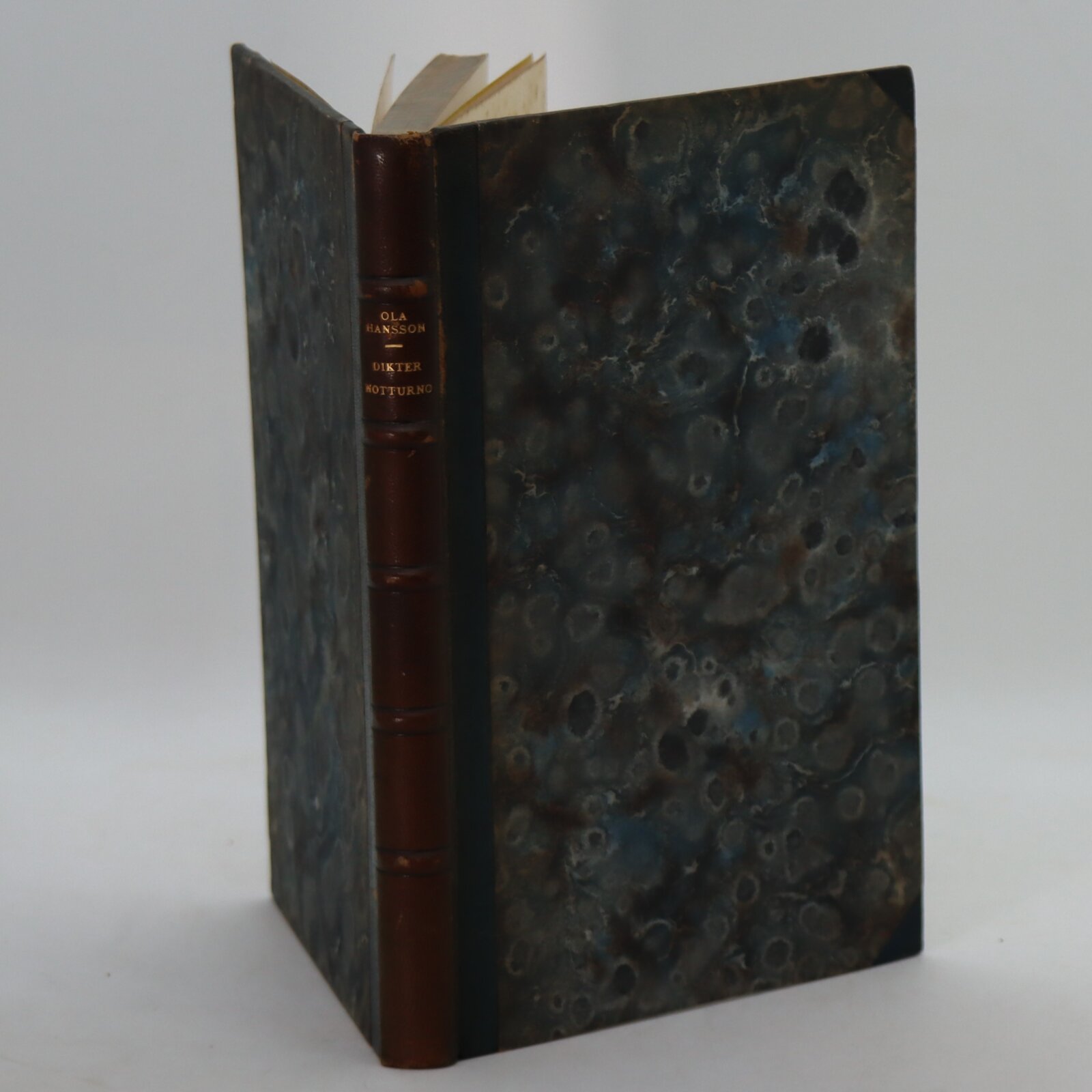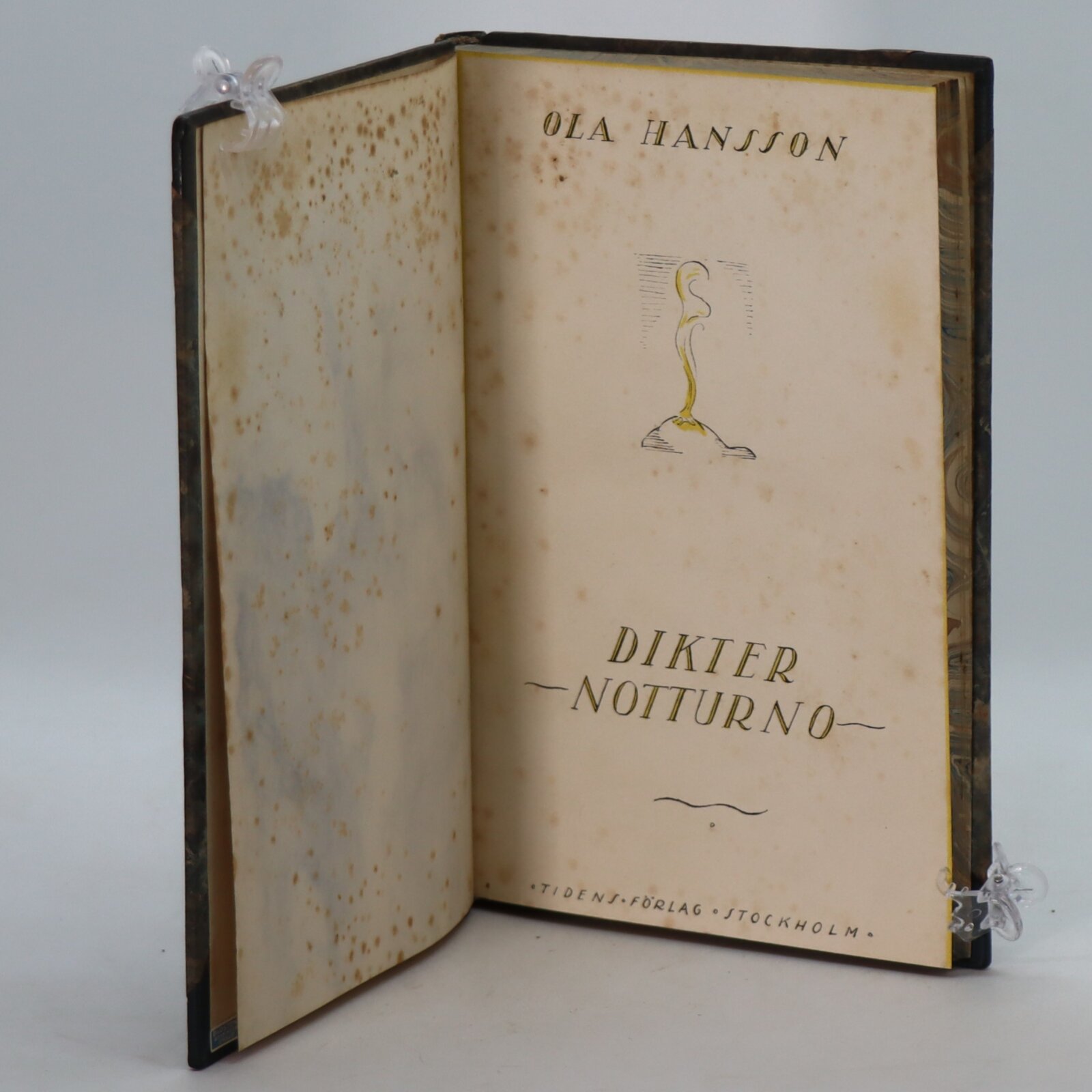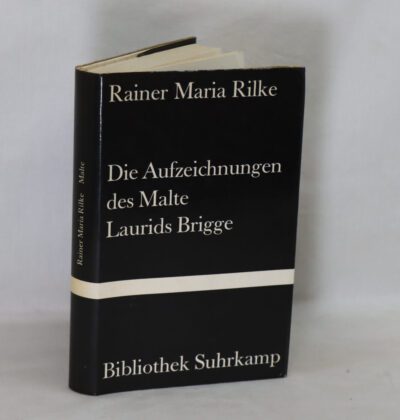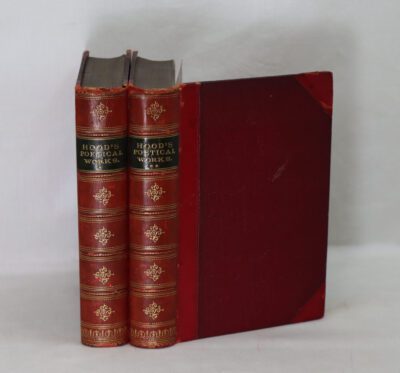Dikter Notturno.
By Ola Hansson
Printed: 1919
Publisher: Tidens Forlag. Stockholm
| Dimensions | 13 × 20 × 2 cm |
|---|---|
| Language |
Language: Swedish
Size (cminches): 13 x 20 x 2
Condition: Fine (See explanation of ratings)
Your items
Item information
Description
Blue calf spine ( faded to brown) with raised banding and gilt title. Blue and brown marbled boards.
F.B.A. provides an in-depth photographic presentation of this item to stimulate your feel and touch. More traditional book descriptions are immediately available.
A dry book but well kept
Ola Hansson (12 November 1860, Hönsinge, Sweden – 26 September 1925, Büyükdere, Turkey) was a Swedish poet, prose writer, and critic. A productive writer, his writings are uneven. However, he is considered today a pioneer within modern Swedish poetry, who reshaped nature poetry; he has sometimes been called the only one among late-19th-century Swedish poets who really absorbed the influence of French Symbolism and “fin-de-siècle” moods. In 1906 Vilhelm Ekelund, a major poet of the next generation, published a paeanic poem hailing him as the like of Pindar, the bard of his province and a poetic forerunner. Ekelund, like Hansson, was a native of the rural southern province of Scania and felt in opposition to the literary fashions of Stockholm; he felt these had rejected Hansson and driven him into exile. From this point on, Ola Hansson began to be reappraised, and in his final years an (unsatisfying) edition of his collected works began to appear in Sweden (greeted by the author’s angry pointing out of its shortcomings in newspaper articles dispatched from his exile). He has remained, in particular, an invoked hero of Scanian writers.
In 1913 he was awarded the first scholarship in memory of Gustaf Fröding, elected by Swedish university students.
Want to know more about this item?

Related products
Share this Page with a friend












